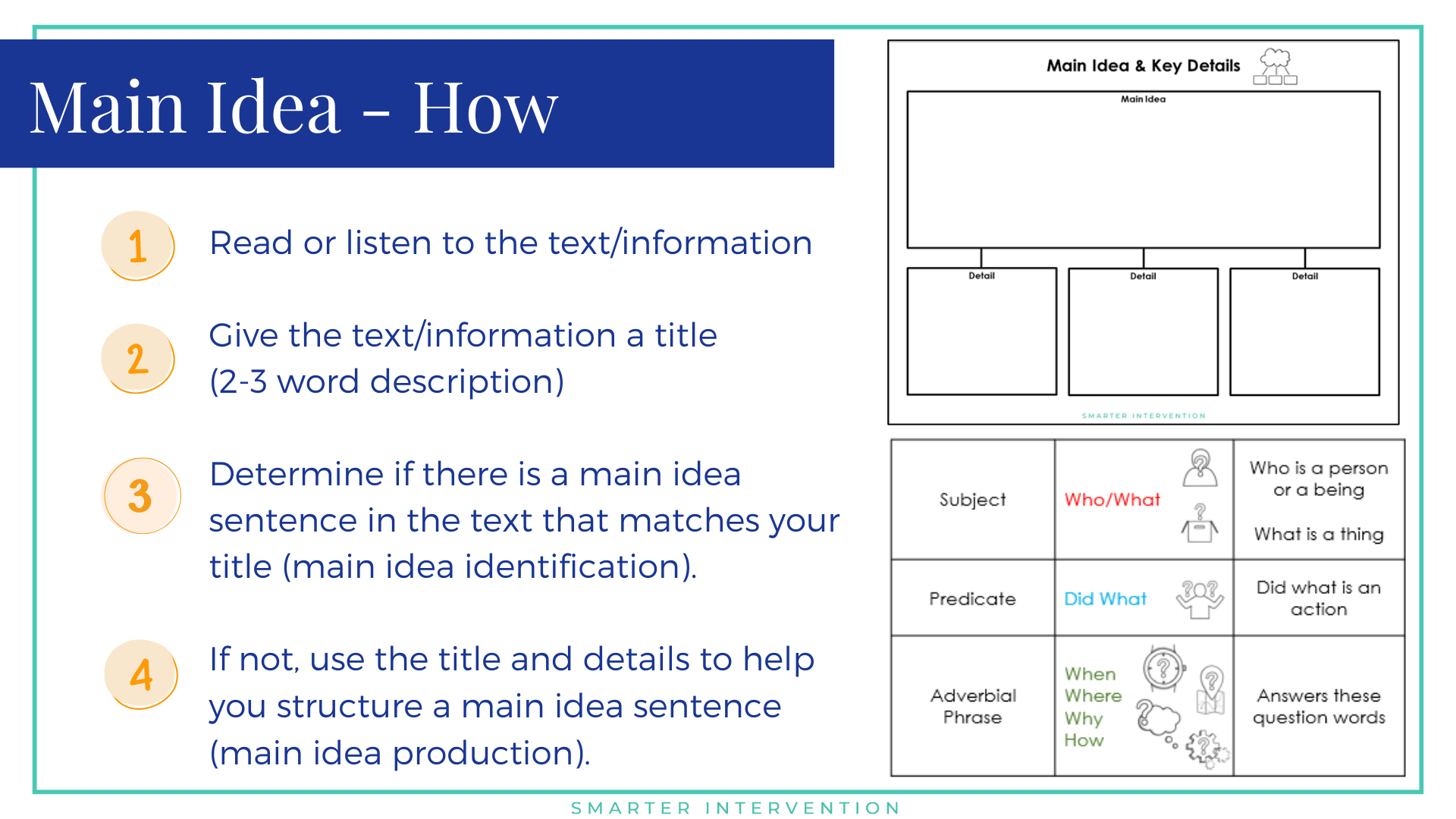Teaching Reading Comprehension - Strategies for Main Idea
Do your students ever struggle to figure out the main idea of a story or passage they've just heard or read?
This is really common because it’s a tricky concept! And, we’re here to share our explicit teaching strategy to help students identify and produce a main idea.
If you’ve read our other Reading Comprehension Strategies blogs, you may already know that when we teach comprehension, we teach the skills in a spiral fashion. We start with a big picture overview for students so they understand each of the 5 levels of comprehension and then we break it down and focus on each of the individual levels and strategies with each level.
We always follow a three-part process for reading comprehension. Pre-reading, during reading, and after reading. In pre-reading, we preview the content and generate background knowledge. During reading, we are looking out for key information. And after reading we are reflecting on what we've read.
Why is it important to get a main idea?
We determine the main idea so we can most effectively summarize something (we're thinking one sentence max here!). This is how we understand and retain what we read. Determining the main idea supports our big picture understanding and memory! Understanding the “gist” of something allows us to process and integrate that information into other information thereby expanding our knowledge base.
There are different ways to get a main idea -
Main Idea Identification: The main idea is directly stated/provided for us in the text and we need to identify it
Main Idea Production: The main idea isn't explicitly stated and we have to generate our own main idea using our understanding of the content provided.
This is an important distinction because sometimes you will have students who are great at one of these skills but not the other. For example, you might have a student who does well generating their own thoughts to create the main idea but then they struggle to identify a main idea sentence that already existed in the text or vice versa.
How do I help students get the main idea?
Step 1 - Read or listen to the text/information
Step 2 - Give the text/information a title, if the passage already has a title, pretend that it didn’t and create your own (it’s important that the title covers the big picture and not a specific detail within the text - this often requires modeling and discussion)
Step 3 - Determine if there is a main idea sentence in the text that matches your main idea title (main idea identification)
Step 4 - If there isn't a main idea in the text, you can use the title you created along with details from the text (the 5 Ws) to produce a main idea. Use the framework who/what, did what, when/where/why/how?
So for example, if a student was trying to generate a main idea from the following paragraph, the student would:
Step 1 - Read or listen to the paragraph.
Step 2 - Give the paragraph a title. For example, they might choose Shifting Plates Make Earthquakes
Step 3 - The main idea identification could be: “Sometimes a sudden slip of those plates makes friction that shakes the Earth and creates a rumble on the ground.”
Step 4 - Main Idea Production using the who/what, did what, when/where/why/how framework might be: “Earthquakes are caused by the earth’s plates shifting suddenly.”
We like to use visuals to help students think about this information as they are listening to or reading information. We also use step-by-step numbered processes wherever possible!
That's it! A super simple strategy to help students with the main idea (and the added visuals can provide a multisensory learning experience for your students - hello helpful doodling?!?). Now, one question we often hear is -
What if my students are struggling with this process?
If they are having a hard time differentiating the main idea from the details, it can be helpful to back it up a bit. In order for students to be able to generate a main idea, they should be proficient with “Category Production.” Category production is the ability to fit words or themes into a category.
For example, if I said “tornadoes, hailstorms, and hurricanes” the category could be “extreme weather events.” In this way “tornadoes, hailstorms, and hurricanes” are the details and “extreme weather events” is the main idea. Sometimes it can be helpful to start back at this level to help students become more familiar with the differences between “details” and a main idea. It can be fun to play games like “Scattergories” to help students develop this key skill (FYI - that’s an affiliate link, so if you decide to grab the game we get a few cents with no extra cost to you! It’s a great game, we’re just saying!).
If you need more activities and ideas to help support main idea identification - jump into the 5CCL Activity Library!
Inside, you’ll get access to hundreds of SOR-aligned resources, games, and other materials to support your instruction, including these resources to teach students to find the main idea! Click here to learn more!
You can find more information about teaching the main idea here:






